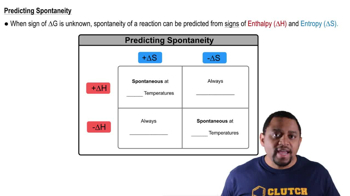Textbook Question
Urea (NH2CONH2), an important nitrogen fertilizer, is produced industrially by the reaction Given that ∆G° = -13.6 kJ, calculate ∆G at 25 °C for the following sets of conditions. .(a) 10 atm NH3, 10 atm CO2, 1.0 M NH2CONH2(b) 0.10 atm NH3, 0.10 atm CO2, 1.0 M NH2CONH2Is the reaction spontaneous for the conditions in part (a) and/or part (b)?




